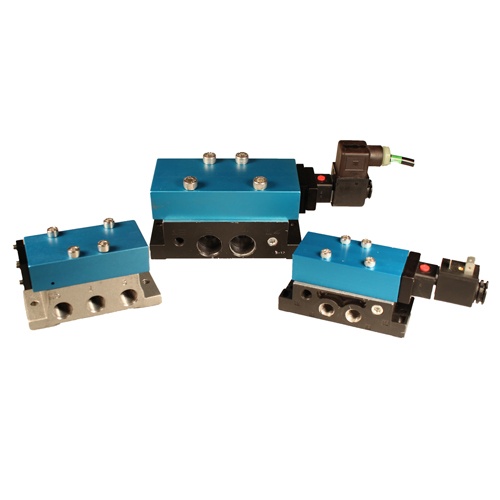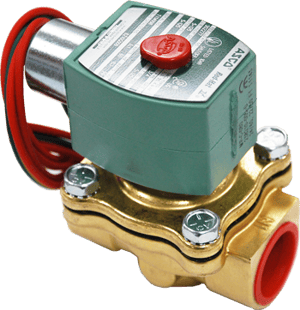
 When I started working with our website 3 years ago, I was baffled by the products it held in its pages. Since that time I’ve learned a great deal about the functions and applications of those products that were once so mysterious. But one valve has always eluded me. I figured this week it was time to finally answer my question: What the heck is a solenoid valve?
When I started working with our website 3 years ago, I was baffled by the products it held in its pages. Since that time I’ve learned a great deal about the functions and applications of those products that were once so mysterious. But one valve has always eluded me. I figured this week it was time to finally answer my question: What the heck is a solenoid valve?
A solenoid valve is an electronically operated valve that is commonly used to replace a manual valve so the valve can be remotely controlled.
A solenoid valve consists of two basic units: a solenoid, or an electromagnet, and a valve body that contains two or more orifices or openings. The solenoid unit consists of a few basic parts, a coil, plunger, sleeve assembly, and plunger with a compatible sealing material.
Solenoid valves work by employing an electromagnetic solenoid coil to either open or close the valve. When the coil inside the solenoid is energized, a plunger is raised or lowered within a sleeve tube to opener close the orifice (depending upon how the valve has been configured to perform).
Solenoid valves work well in many different applications that involve liquids or gases:
Solenoid valves are extremely versatile. They can be used in many diverse and unique system applications handling air, water, oil, gas, steam… pretty much any liquid or gaseous substance.
Another thing that’s great about solenoid valves is that they’re a very efficient means of automatic flow control for liquids and gases. These types of valves require little wiring, expense, and effort when compared to other valves.
Of course these valves can’t be without their disadvantages. Solenoid valves have a difficult time with dirty or contaminated fluids/gases. Foreign matter can accumulate in the core tubes and impede operation.
It’s also very important that the proper voltage is applied to these valves. Too little and it won’t open or close, may cause “chattering” and excessive noise, and will wear faster. Overvoltage will generate too much heat and prematurely wear the solenoid.
They’re also sensitive to moisture. Moisture inside the solenoid enclosure will cause the coil to fail, and the valve to stop opening/closing.
If you’re thinking a solenoid valve might be right for your application, talk to engineer experienced in selection/sizing of these types of valves. Doing so will help your system perform at its highest efficiency, while requiring less maintenance.
Thinking solenoid valves right be right for your applications? Ask us about it! We have a wide selection of valves to fit your application.
These Stories on Valves
Headquarters and Service Center
Located outside Green Bay, WI
707 Ford Street
Kimberly, WI 54136
920-733-4425
OptiFlow Design and Build Center
1002 Truman Street
Kimberly, WI 54136
920-733-4425
Burnsville Service Center
12265 Nicollet Avenue
Burnsville, MN 55337
952-444-1949
Grand Rapids Service Center
26489 Industrial Blvd
Cohasset, MN 55721
952-444-1949
© Copyright 2024. Crane Engineering. All Rights Reserved. Privacy Policy.